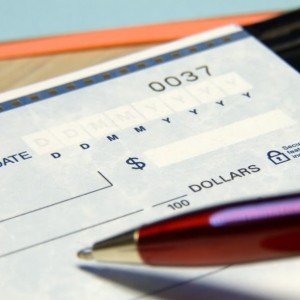Checking accounts are an absolute necessity these days. You can either have a checking account or run to the bank or other outlet for money orders. Many people pay for almost everything with a check including groceries, gas, clothes and a long list of other things. When you add an ATM card to this picture, your chances for a potential problem is greatly enhanced.
Don’t get me wrong. There are many people that can keep their checkbook up to date, even deducting all of the ATM advances and automatic withdrawals as they make them. However, too many people that write checks for everything wind up not entering a check when it is written or an ATM advance when it is made. The result is a bounced check fee of up to $25 for the bank and god only knows what the store where you wrote the check could charge you.
It seems like carrying cash to pay for things isn’t the “IN” thing to do. When I’m in the check out line, most people are paying with a credit card, debit card, or check. I realize that carrying cash has its risks. You could lose it or have it stolen. What are the risks when paying by check? There are absolutely none if you enter each check and properly deduct the amount from your account. However, I have counseled people that have as much as $100 per month in overdraft fees. This isn’t just for one month. This is an average over a six month period. That is a lot of money that these people couldn’t afford.
What’s the best way to handle my checking account?
If you don’t have problems keeping up with your checking account, keep doing what you are doing.
If you occasionally have bounced checks, I recommend that you use your checking account only to pay your monthly bills and use cash for everything else. If you have an ATM card, destroy it.
With that said, I know you will probably not quit writing checks or destroy your ATM card. So let’s look at what you need to do to keep up with your checking account.
Determine exactly how much money you have in your account even if you have to go to the bank for help.
Enter that information on a new page in your check register.
Enter the date, your check number, payee and amount in your check register when you write the check. Don’t worry about the people in line behind you. This will only take a few seconds. If you like, you can deduct the amount of the check when you get home.
Take your checkbook with you when you use the ATM and enter your withdrawal while you are still at the machine.
Develop a system to deduct automatic withdrawals. It is probably best to deduct these on the first of each month.
Add any deposits as you make them. You need to find out how much and when direct deposits should be entered in your check register.
When you receive your bank statement, reconcile it as soon as possible. If you find any discrepancies check them out immediately. Don’t give up until you are sure you have resolved the problem. The balance you show in your check register should match the bank, less any bank charges.
When you reconcile your bank statement be sure to clearly mark the checks that have been returned to you. One of the biggest problems people have with overdrafts is missing a check that is taking a long time clearing the bank. Go back at least a month to make sure all previous check have cleared.
Having problems with your checking account, as with all other money problems, is a matter of discipline. It can cost you a lot of money by not applying that discipline to managing your checking account.

